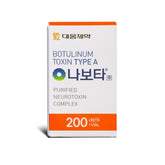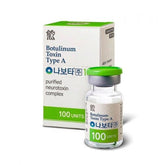Understanding the Mechanism of Lipolysis: Breaking Down Fat Cells

Understanding the Mechanism of Lipolysis: Breaking Down Fat Cells. Lipolysis is a fundamental biological process that plays a crucial role in energy metabolism and weight management. This process involves the breakdown of fat cells, or adipocytes, to release fatty acids and glycerol, which are then utilized by the body for energy. Understanding the mechanism of lipolysis can provide valuable insights into how our bodies manage fat stores and how we can effectively support fat loss through diet, exercise, and medical interventions.
What is Lipolysis?
Lipolysis is the process by which triglycerides stored in fat cells are broken down into free fatty acids and glycerol. This process is essential for providing the body with energy, especially during periods of fasting, exercise, or calorie restriction. The breakdown of fat cells through lipolysis is regulated by various hormones and enzymes that respond to the body’s energy demands.
The Biological Mechanism of Lipolysis
The mechanism of lipolysis involves a series of biochemical steps that are tightly regulated by hormones and enzymes. Here’s a step-by-step breakdown of how lipolysis occurs:
Hormonal Activation
The initiation of lipolysis begins with hormonal signals. Key hormones involved in this process include:
- Epinephrine and Norepinephrine: These catecholamines are released in response to stress or physical activity and bind to beta-adrenergic receptors on fat cells.
- Glucagon: Released when blood sugar levels are low, glucagon promotes the breakdown of fat for energy.
- Adrenaline: Similar to epinephrine, it activates lipolysis during periods of stress or exercise.
Enzyme Activation
Once the hormones bind to their respective receptors on the fat cells, they trigger a cascade of events leading to the activation of enzymes involved in lipolysis:
- Adenylate Cyclase Activation: The binding of hormones to receptors activates adenylate cyclase, an enzyme that converts ATP to cyclic AMP (cAMP).
- cAMP Role: cAMP acts as a secondary messenger, activating protein kinase A (PKA).
Breakdown of Triglycerides
Activated PKA phosphorylates and activates hormone-sensitive lipase (HSL), the key enzyme responsible for breaking down triglycerides:
- Triglyceride Breakdown: HSL breaks down triglycerides into diacylglycerol, which is further broken down into monoacylglycerol and finally into free fatty acids and glycerol.
- Release into the Bloodstream: The free fatty acids and glycerol are released from the fat cells into the bloodstream, where they can be transported to tissues and organs for energy production.
Factors Influencing Lipolysis
Several factors can influence the rate and efficiency of lipolysis, including:
Diet
- Caloric Intake: A calorie deficit can enhance lipolysis as the body needs to utilize stored fat for energy.
- Macronutrient Composition: Diets high in protein and low in carbohydrates can promote lipolysis through the stimulation of glucagon and reduction of insulin levels.
Physical Activity
- Exercise: Regular physical activity, especially aerobic exercise, can increase the rate of lipolysis by elevating catecholamine levels and enhancing enzyme activity.
- Intensity and Duration: Both the intensity and duration of exercise influence the extent of lipolysis, with prolonged and high-intensity workouts being particularly effective.
Hormonal Balance
- Insulin: High insulin levels inhibit lipolysis, as insulin promotes fat storage. Maintaining balanced blood sugar levels is crucial for effective lipolysis.
- Thyroid Hormones: These hormones regulate metabolism and can influence the rate of lipolysis.
Genetic Factors
- Genetic Predisposition: Genetics can play a role in the efficiency of lipolysis, with some individuals naturally having a higher rate of fat breakdown than others.
Medical and Technological Interventions
In addition to lifestyle factors, several medical and technological interventions can support or enhance the process of lipolysis:
Lipolytic Injections
- Deoxycholic Acid: Injections of deoxycholic acid can help break down fat cells in specific areas, such as under the chin, by disrupting the cell membrane of adipocytes.
Cryolipolysis
- CoolSculpting: This non-invasive procedure uses controlled cooling to freeze and destroy fat cells, which are then naturally eliminated by the body over time.
Laser Lipolysis
- Laser Treatments: Laser lipolysis uses laser energy to heat and destroy fat cells, promoting their breakdown and removal by the body.
Supporting Lipolysis through Lifestyle
Supporting lipolysis through lifestyle choices involves a combination of diet, exercise, and healthy habits:
Balanced Diet
- Reduce Carbohydrates: Lowering carbohydrate intake can reduce insulin levels and promote fat burning.
- Increase Protein: High-protein diets support muscle maintenance and enhance metabolic rate, aiding lipolysis.
Regular Exercise
- Incorporate Aerobic Exercise: Activities like running, cycling, and swimming can boost catecholamine levels and promote fat breakdown.
- Strength Training: Building muscle increases metabolic rate and supports overall fat loss.
Hydration and Sleep
- Stay Hydrated: Proper hydration is essential for metabolic processes, including lipolysis.
- Prioritize Sleep: Adequate sleep helps regulate hormones that influence appetite and metabolism, supporting effective fat loss.
Understanding the mechanism of lipolysis provides valuable insights into how the body breaks down fat cells and utilizes them for energy. By recognizing the factors that influence lipolysis, such as diet, exercise, and hormonal balance, you can take proactive steps to support this process and achieve your fat loss goals. Whether through lifestyle changes or medical interventions, enhancing lipolysis can lead to improved energy levels, better weight management, and overall health. Embrace these strategies to optimize your body's natural ability to break down and utilize fat, paving the way for a healthier and more vibrant life.





